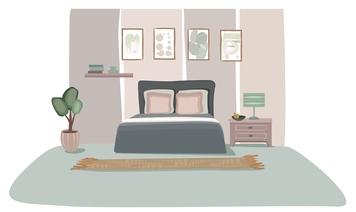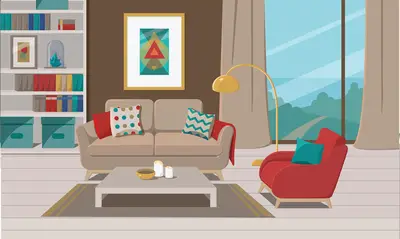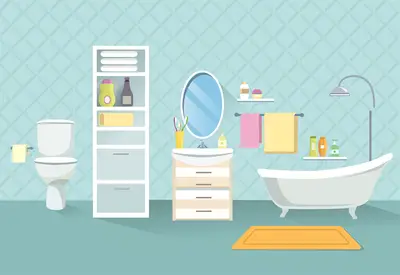

Lesson 16 - La Casa (The House)
Navigation: Home
→ Course
→ Lesson 16
→ Hay
Pages in this lesson: Furniture - Hay - Dialogue - Reading - Quiz
This page: Learn the verb hay in Spanish (there is/there are).

The verb "hay"
Grammar Lesson
hay
The verb hay means there is and there are. Hay is used with both singular and plural objects. The verb is pronounced like "eye" in English because the letter H is silent in Spanish.
- Hay una silla. = There is a chair.
- Hay dos sillas. = There are two chairs.
No hay
To form the negative, you just put the word no in front of hay.
- No hay una silla. = There isn't a chair.
- No hay sillas. = There aren't chairs.
¿Hay _____?
Forming a question with hay is also very simple. You just add question marks.
- ¿Hay una silla? = Is there a chair?
- ¿Hay sillas? = Are there chairs?
Practice
Section 1
Answer the questions about the house with Sí or No.

Practice
Section 2
Write sentences to describe what is and is not in each room. Don't forget to use correct capitalization, accents and punctuation, or the computer will mark it as incorrect.

Examples:
cama/habitación → Hay una cama en la habitación.
refrigerador/habitación → No hay un refrigerador en la habitación.
sillas/habitación → No hay sillas en la habitación.



Find the mistake in the sentence and re-write it correctly in the space. Don't forget to use correct capitalization, accents and punctuation, or the computer will mark it as incorrect.
|
Writing
Describe what is and is not in your house.
- Examples:
- Hay dos camas.
- No hay un sillón.
If you want to type a special character (like an accented letter) in the comments section, you could do one of the following . . .
- Select and copy the character that you need → á é í ó ú ü ñ ¿ ¡ Á É Í Ó Ú Ü Ñ « »
- Use special codes on your computer if you have numeric keypad (instructions HERE).
- Type your sentences into the text box below and use the special character buttons provided. Then select and copy your text and paste it into the comments section.
If you see an error in someone else's sentence, please respond with the correction. Comments that are not from "Janet Castrejon" (the author of this page) do not represent Simplified Spanish. If someone is writing inappropriate comments on this webpage, please send a message to [email protected] and include the page that you saw the comment on.
Lesson 16 - La Casa (The House)
Furniture - Hay - Dialogue - Reading - Quiz
Important Links
Pronouns - Pronunciation - Verbs



